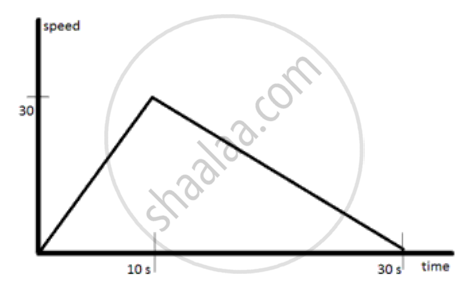Advertisements
Advertisements
प्रश्न
A car accelerates to a velocity of 30 m/s in 10 s and then decelerates for 20 s so that it stops. Draw a velocity-time graph to represent the motion and find:
The acceleration.
उत्तर

Acceleration a= (v - u)/t= (30 - 0)/ 10 = 3 ms-2
APPEARS IN
संबंधित प्रश्न
Define acceleration. State its unit.
A train starts from rest and accelerates uniformly at a rate of 2 m s-2 for 10 s. It then maintains a constant speed for 200 s. The brakes are then applied and the train is uniformly retarded and comes to rest in 50 s. Find
(i) The maximum velocity reached,
(ii) The retardation in the last 50 s,
(iii) The total distance travelled,
(iv) The average velocity of the train.
A car travels with uniform velocity of 25 m s-1 for 5 s. The brakes are then applied and the car is uniformly retarded and comes to rest in further 10 s. Find:
- The distance which the car travels before the brakes are applied,
- Retardation and
- The distance travelled by car after applying the brakes.
The acceleration of a body is 8.5 ms-2. What does this statement mean?
What happens to the stepwise increasing speed-time graph when the size of each step is made very small?
Convert the following acceleration:
1/36 m/s2 into km/h2
If the velocity of a body does not change, then its acceleration is ______.
The acceleration of the body that moves with a uniform velocity will be ______.
If a body starts from rest, what can be said about the acceleration of the body?
Assertion: A negative acceleration of a body can be associated with speeding up of the body.
Reason: Increase in the speed of a moving body is independent of its direction of motion.
